"You either have it or you don't."
--Elinor Glyn
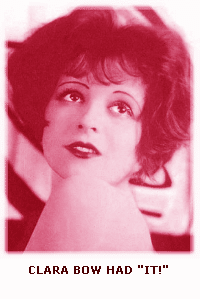 Clara Bow was born in 1905 on a rotten side street in the Bay Ridge section of Brooklyn, New York. Her father made a bare existence as a carpenter. "I never had a doll when I was a kid," she recalled years later. She had more searing memories, too. "No one wanted me," she said. "My folks didn't want me because two babies had died before me and when I came along they were afraid it would kill mother. My mother never knew a moment free from illness. I've never forgotten how she suffered. I can remember yet how white she looked as she stood over the tub scrubbing out an old red-checkered tablecloth."
Clara Bow was born in 1905 on a rotten side street in the Bay Ridge section of Brooklyn, New York. Her father made a bare existence as a carpenter. "I never had a doll when I was a kid," she recalled years later. She had more searing memories, too. "No one wanted me," she said. "My folks didn't want me because two babies had died before me and when I came along they were afraid it would kill mother. My mother never knew a moment free from illness. I've never forgotten how she suffered. I can remember yet how white she looked as she stood over the tub scrubbing out an old red-checkered tablecloth."
 Mrs. Bow had a nervous disease and Clara remembered that she sometimes went into a "trance." She said she awoke one night and found her mother pressing a kitchen knife to her throat. The child swung wildly, knocked the knife to the floor and ran screaming from the room.
Mrs. Bow had a nervous disease and Clara remembered that she sometimes went into a "trance." She said she awoke one night and found her mother pressing a kitchen knife to her throat. The child swung wildly, knocked the knife to the floor and ran screaming from the room.
In 1922 the girl in the dingy Bay Ridge flat sent two photos of herself to a fan magazine looking for "The Most Beautiful Girl in the 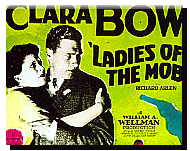 World." She was seventeen and had flaming red hair and a lovely round face and a body to match it. She won the contest and got a part in a movie but her scenes perished in the cutting room.
World." She was seventeen and had flaming red hair and a lovely round face and a body to match it. She won the contest and got a part in a movie but her scenes perished in the cutting room.  Then she got into Down to Sea in Ships, a whaling epic shot in New Bedford, Massachusetts, and her playing caught the eye of producer B.P. Schulberg. He brought her to Hollywood--salary, fifty dollars a week--and Paramount Studios soon signed them both. The newcomer did well in such films as Ladies of the Mob, The Fleet's In and Three Weekends.
Then she got into Down to Sea in Ships, a whaling epic shot in New Bedford, Massachusetts, and her playing caught the eye of producer B.P. Schulberg. He brought her to Hollywood--salary, fifty dollars a week--and Paramount Studios soon signed them both. The newcomer did well in such films as Ladies of the Mob, The Fleet's In and Three Weekends.
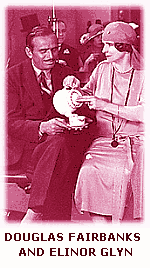 The big break came in 1926. Elinor Glyn dreamed up two magic words to Clara Bow's measurements: "It Girl." What did it mean? "It is an indefinable sort of sex appeal," Mrs. Glyn said. "There are few people in the world who possess it. The only ones in Hollywood who do are Rex, the wild stallion; actor Tony Moreno, the Ambassador Hotel doorman and Clara Bow." But it really wasn't indefinable at all. It went back to the discarding of the ankle-length skirt and the high-buttoned shoe and the burlap-bag undergarment. Now it was better advertised and not a sin but a virtue.
The big break came in 1926. Elinor Glyn dreamed up two magic words to Clara Bow's measurements: "It Girl." What did it mean? "It is an indefinable sort of sex appeal," Mrs. Glyn said. "There are few people in the world who possess it. The only ones in Hollywood who do are Rex, the wild stallion; actor Tony Moreno, the Ambassador Hotel doorman and Clara Bow." But it really wasn't indefinable at all. It went back to the discarding of the ankle-length skirt and the high-buttoned shoe and the burlap-bag undergarment. Now it was better advertised and not a sin but a virtue. 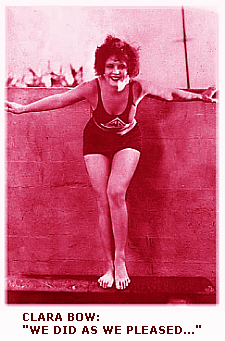 Now it marked the woman's total emancipation; the shackles were off. The "It Girl" had the same sex appeal as before but more of it was showing, and it was also a little more available. That was the point. The "It Girl" was the next step--or the next step-in--from the Flapper to Flaming
Youth: Anybody who didn't get the idea needed to do no more than catch Clara Bow in the movie of the same name as she soared to Hollywood's dizziest heights. "It" didn't need any words.
Now it marked the woman's total emancipation; the shackles were off. The "It Girl" had the same sex appeal as before but more of it was showing, and it was also a little more available. That was the point. The "It Girl" was the next step--or the next step-in--from the Flapper to Flaming
Youth: Anybody who didn't get the idea needed to do no more than catch Clara Bow in the movie of the same name as she soared to Hollywood's dizziest heights. "It" didn't need any words.
For herself, Miss Bow came to look back on the time with a sense of regret. "In my era," she said in 1951, "We had individuality. We did as we pleased. We stayed up late. We dressed the way we wanted. I'd whiz down Sunset Boulevard in my open Kissel (flaming red, of course) with seven red chow dogs to match my hair. Today they're sensible and end up with better health--but we had more fun."
In Clara Bow's case, the fun took all manner of turns. She could carry on blazing off-screen romances with Gary Cooper, 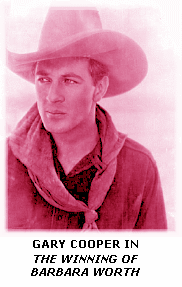 Harry Richman ("Other men did not understand her as I did. They petted her too much"), Gilbert Roland, or director Victor Fleming. Or she could have the University of Southern California's famed "Thundering Herd" in for brawling backyard parties; football players fascinated her. Or she could sit up all night playing poker with the maid, cook, and chauffeur. Or break out some beer for the
Harry Richman ("Other men did not understand her as I did. They petted her too much"), Gilbert Roland, or director Victor Fleming. Or she could have the University of Southern California's famed "Thundering Herd" in for brawling backyard parties; football players fascinated her. Or she could sit up all night playing poker with the maid, cook, and chauffeur. Or break out some beer for the 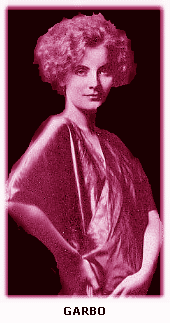 cops on the Beverly Hills night patrol. Or go roller skating on the block. Or put on a pair of slacks and go to a party. But nothing would help. Clara Bow felt lonely and unwanted even when there were crowds around.
cops on the Beverly Hills night patrol. Or go roller skating on the block. Or put on a pair of slacks and go to a party. But nothing would help. Clara Bow felt lonely and unwanted even when there were crowds around.
The merry-go-round slowed down pretty fast. The movies began to talk--and sing, too--in 1927. Warner Brothers blazed the trail with Al Jolson in The Jazz Singer, adding a dimension to the film art. The casualties would be great: John Gilbert's piping tones, very bad for the talkies, ruined his career. Greta Garbo didn't like the new order well enough to stay ("Ay tank I go home"). Other imported stars--Pola Negri, Emil Jannings, Conrad Veidt--had to go into limbo until they could master English. Gloria Swanson and Norma Shearer had to step down from their pinnacles.
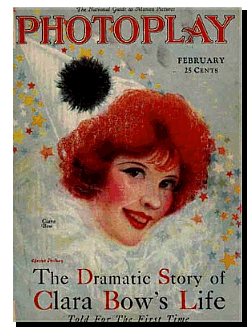 Clara Bow compounded her troubles with some touches of scandal. A "Love Balm" suit brought by the wife of Dr. William Earl Pearson cost her $30,000 and some even more costly publicity.
Clara Bow compounded her troubles with some touches of scandal. A "Love Balm" suit brought by the wife of Dr. William Earl Pearson cost her $30,000 and some even more costly publicity.  A legal battle with her ex-secretary, Daisy De Voe, involved scandalous charges on both sides, spiced with juicy tales out of the star's love-and-liquor department. Daisy De Voe went to jail for pilfering from the "It Girl's" five thousand-dollar-a-week pay check but the winner paid the bigger price.
Her Paramount contract was terminated by the usual "mutual consent" in 1931. She married cowboy star Rex Bell that year, saying she was looking for something "you cannot obtain with money."
She tried a comeback in 1932 and 1933, but failed. She brought up two sons. Somewhere along the line she began to crack up. She suffered periodic breakdowns and wound up in a sanitarium in the Hollywood hills. Bell, now
A legal battle with her ex-secretary, Daisy De Voe, involved scandalous charges on both sides, spiced with juicy tales out of the star's love-and-liquor department. Daisy De Voe went to jail for pilfering from the "It Girl's" five thousand-dollar-a-week pay check but the winner paid the bigger price.
Her Paramount contract was terminated by the usual "mutual consent" in 1931. She married cowboy star Rex Bell that year, saying she was looking for something "you cannot obtain with money."
She tried a comeback in 1932 and 1933, but failed. She brought up two sons. Somewhere along the line she began to crack up. She suffered periodic breakdowns and wound up in a sanitarium in the Hollywood hills. Bell, now 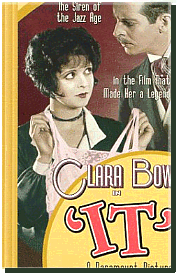 Lieutenant Governor of Nevada, blames it all on the ex-movie queen's career. "If she had been Minnie Zilch instead of Clara Bow," Bell said in 1956, "perhaps this never would have happened to her. But the emotional strain of her early years was just too much for her nervous system. It's like training horses. Sometimes when you're starting thoroughbreds, you break 'em in too early, while you take a saddle-horse and bring him along easy."
Lieutenant Governor of Nevada, blames it all on the ex-movie queen's career. "If she had been Minnie Zilch instead of Clara Bow," Bell said in 1956, "perhaps this never would have happened to her. But the emotional strain of her early years was just too much for her nervous system. It's like training horses. Sometimes when you're starting thoroughbreds, you break 'em in too early, while you take a saddle-horse and bring him along easy."
In the sanitarium Clara Bow has trouble sleeping. She paces her room much of the time. She paints in oils. She reads the movie magazines. She watches television and writes fan letters to TV players. She has one consolation: the sick, work-worn mother who was afraid to bring her into her world never knew the good and can't know the bad in her girl's eventful journey. Mrs. Bow died before the name flashed across the nation's conscience in the Twenties.



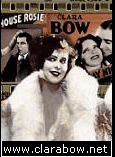

 Clara Bow was born in 1905 on a rotten side street in the Bay Ridge section of Brooklyn, New York. Her father made a bare existence as a carpenter. "I never had a doll when I was a kid," she recalled years later. She had more searing memories, too. "No one wanted me," she said. "My folks didn't want me because two babies had died before me and when I came along they were afraid it would kill mother. My mother never knew a moment free from illness. I've never forgotten how she suffered. I can remember yet how white she looked as she stood over the tub scrubbing out an old red-checkered tablecloth."
Clara Bow was born in 1905 on a rotten side street in the Bay Ridge section of Brooklyn, New York. Her father made a bare existence as a carpenter. "I never had a doll when I was a kid," she recalled years later. She had more searing memories, too. "No one wanted me," she said. "My folks didn't want me because two babies had died before me and when I came along they were afraid it would kill mother. My mother never knew a moment free from illness. I've never forgotten how she suffered. I can remember yet how white she looked as she stood over the tub scrubbing out an old red-checkered tablecloth." Mrs. Bow had a nervous disease and Clara remembered that she sometimes went into a "trance." She said she awoke one night and found her mother pressing a kitchen knife to her throat. The child swung wildly, knocked the knife to the floor and ran screaming from the room.
Mrs. Bow had a nervous disease and Clara remembered that she sometimes went into a "trance." She said she awoke one night and found her mother pressing a kitchen knife to her throat. The child swung wildly, knocked the knife to the floor and ran screaming from the room. World." She was seventeen and had flaming red hair and a lovely round face and a body to match it. She won the contest and got a part in a movie but her scenes perished in the cutting room.
World." She was seventeen and had flaming red hair and a lovely round face and a body to match it. She won the contest and got a part in a movie but her scenes perished in the cutting room.  Then she got into Down to Sea in Ships, a whaling epic shot in New Bedford, Massachusetts, and her playing caught the eye of producer B.P. Schulberg. He brought her to Hollywood--salary, fifty dollars a week--and Paramount Studios soon signed them both. The newcomer did well in such films as Ladies of the Mob, The Fleet's In and Three Weekends.
Then she got into Down to Sea in Ships, a whaling epic shot in New Bedford, Massachusetts, and her playing caught the eye of producer B.P. Schulberg. He brought her to Hollywood--salary, fifty dollars a week--and Paramount Studios soon signed them both. The newcomer did well in such films as Ladies of the Mob, The Fleet's In and Three Weekends. The big break came in 1926. Elinor Glyn dreamed up two magic words to Clara Bow's measurements: "It Girl." What did it mean? "It is an indefinable sort of sex appeal," Mrs. Glyn said. "There are few people in the world who possess it. The only ones in Hollywood who do are Rex, the wild stallion; actor Tony Moreno, the Ambassador Hotel doorman and Clara Bow." But it really wasn't indefinable at all. It went back to the discarding of the ankle-length skirt and the high-buttoned shoe and the burlap-bag undergarment. Now it was better advertised and not a sin but a virtue.
The big break came in 1926. Elinor Glyn dreamed up two magic words to Clara Bow's measurements: "It Girl." What did it mean? "It is an indefinable sort of sex appeal," Mrs. Glyn said. "There are few people in the world who possess it. The only ones in Hollywood who do are Rex, the wild stallion; actor Tony Moreno, the Ambassador Hotel doorman and Clara Bow." But it really wasn't indefinable at all. It went back to the discarding of the ankle-length skirt and the high-buttoned shoe and the burlap-bag undergarment. Now it was better advertised and not a sin but a virtue.  Now it marked the woman's total emancipation; the shackles were off. The "It Girl" had the same sex appeal as before but more of it was showing, and it was also a little more available. That was the point. The "It Girl" was the next step--or the next step-in--from the Flapper to Flaming
Youth: Anybody who didn't get the idea needed to do no more than catch Clara Bow in the movie of the same name as she soared to Hollywood's dizziest heights. "It" didn't need any words.
Now it marked the woman's total emancipation; the shackles were off. The "It Girl" had the same sex appeal as before but more of it was showing, and it was also a little more available. That was the point. The "It Girl" was the next step--or the next step-in--from the Flapper to Flaming
Youth: Anybody who didn't get the idea needed to do no more than catch Clara Bow in the movie of the same name as she soared to Hollywood's dizziest heights. "It" didn't need any words. Harry Richman ("Other men did not understand her as I did. They petted her too much"), Gilbert Roland, or director Victor Fleming. Or she could have the University of Southern California's famed "Thundering Herd" in for brawling backyard parties; football players fascinated her. Or she could sit up all night playing poker with the maid, cook, and chauffeur. Or break out some beer for the
Harry Richman ("Other men did not understand her as I did. They petted her too much"), Gilbert Roland, or director Victor Fleming. Or she could have the University of Southern California's famed "Thundering Herd" in for brawling backyard parties; football players fascinated her. Or she could sit up all night playing poker with the maid, cook, and chauffeur. Or break out some beer for the  cops on the Beverly Hills night patrol. Or go roller skating on the block. Or put on a pair of slacks and go to a party. But nothing would help. Clara Bow felt lonely and unwanted even when there were crowds around.
cops on the Beverly Hills night patrol. Or go roller skating on the block. Or put on a pair of slacks and go to a party. But nothing would help. Clara Bow felt lonely and unwanted even when there were crowds around. Clara Bow compounded her troubles with some touches of scandal. A "Love Balm" suit brought by the wife of Dr. William Earl Pearson cost her $30,000 and some even more costly publicity.
Clara Bow compounded her troubles with some touches of scandal. A "Love Balm" suit brought by the wife of Dr. William Earl Pearson cost her $30,000 and some even more costly publicity.  A legal battle with her ex-secretary, Daisy De Voe, involved scandalous charges on both sides, spiced with juicy tales out of the star's love-and-liquor department. Daisy De Voe went to jail for pilfering from the "It Girl's" five thousand-dollar-a-week pay check but the winner paid the bigger price.
Her Paramount contract was terminated by the usual "mutual consent" in 1931. She married cowboy star Rex Bell that year, saying she was looking for something "you cannot obtain with money."
She tried a comeback in 1932 and 1933, but failed. She brought up two sons. Somewhere along the line she began to crack up. She suffered periodic breakdowns and wound up in a sanitarium in the Hollywood hills. Bell, now
A legal battle with her ex-secretary, Daisy De Voe, involved scandalous charges on both sides, spiced with juicy tales out of the star's love-and-liquor department. Daisy De Voe went to jail for pilfering from the "It Girl's" five thousand-dollar-a-week pay check but the winner paid the bigger price.
Her Paramount contract was terminated by the usual "mutual consent" in 1931. She married cowboy star Rex Bell that year, saying she was looking for something "you cannot obtain with money."
She tried a comeback in 1932 and 1933, but failed. She brought up two sons. Somewhere along the line she began to crack up. She suffered periodic breakdowns and wound up in a sanitarium in the Hollywood hills. Bell, now  Lieutenant Governor of Nevada, blames it all on the ex-movie queen's career. "If she had been Minnie Zilch instead of Clara Bow," Bell said in 1956, "perhaps this never would have happened to her. But the emotional strain of her early years was just too much for her nervous system. It's like training horses. Sometimes when you're starting thoroughbreds, you break 'em in too early, while you take a saddle-horse and bring him along easy."
Lieutenant Governor of Nevada, blames it all on the ex-movie queen's career. "If she had been Minnie Zilch instead of Clara Bow," Bell said in 1956, "perhaps this never would have happened to her. But the emotional strain of her early years was just too much for her nervous system. It's like training horses. Sometimes when you're starting thoroughbreds, you break 'em in too early, while you take a saddle-horse and bring him along easy."